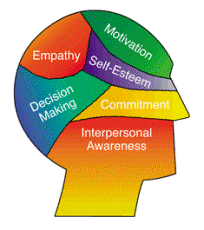
Throughout history, scientists have tried to measure intelligence in many different ways and formats. These measures of intelligence have been used to rank people in ability, talent and other characteristics. For a business seeking new employees, finding highly intelligent candidates is key. But how much does intelligence truly relate to workplace success? Does emotional intelligence factor in, and if so, how?
IQ, EQ and Business
The business world is continuing to understand how to properly implement the use of EQ for the betterment of their personnel. But since Goleman first used the term in 1995, he has inspired countless organizations to take EQ into consideration. Since publishing his book, Goleman has spoken across the world on how good leaders have a high EQ.
Travis Bradberry, coauthor of Emotional Intelligence 2.0, notes in an article for Forbes that high EQ helps organizations understand the intangibles that make leaders successful. EQ is the strongest predictor of performance; in Bradberry’s studies, 90 percent of top performers are high in EQ and just 20 percent of bottom performers are high in EQ. As far as IQ, people with average IQ scores outperform those with higher IQs a majority of the time.
The important difference between IQ and EQ is that EQ can be developed. By gaining more experience and education, professionals can improve their EQ and become better leaders. Organizations can identify who needs improvement in EQ and develop strategies to increase it. This can help companies foster new leaders more efficiently than looking for pure intellect.
Read more about IQ vs EQ in the Workplace.







What I find interesting is that EQ still seems underappreciated, all these years later. When you see sales training materials for example, I find that a lot of them teach people to be empathetic in a really insincere way. I think the power of EQ comes from really believing in what you are doing and how you can help someone and relate to them. Faking that doesn’t really cut it.
Very well put particularly the last sentence.